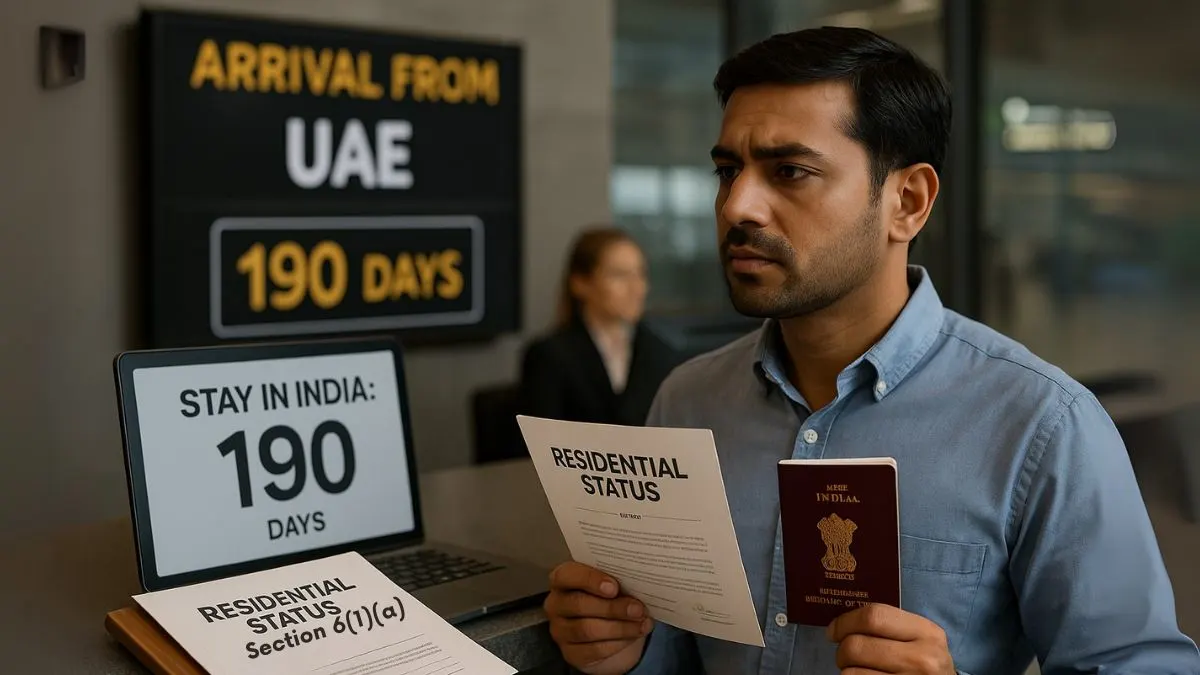
What is Section 6(1)(a)? Let’s Decode It
Section 6(1)(a) defines the most basic condition for determining residential status — the number of days you stay in India during a financial year.
According to this clause, an individual is said to be a resident in India if they are in the country for 182 days or more during the previous year. This rule seems straightforward, but the tax impact is far-reaching & varies greatly depending on your travel patterns, income sources & ties to India.
Why is Residential Status So Important?
Your residential status determines what part of your income will be taxed in India.
- A Resident & Ordinarily Resident (ROR) is taxed on their global income
- A Resident but Not Ordinarily Resident (RNOR) is taxed on Indian income & income from a business or profession controlled from India
- A Non-Resident (NR) is taxed only on income earned or received in India
That’s why Section 6(1)(a) acts like a trigger point. Once you cross that 182-day mark, your income tax liability can shoot up depending on where your earnings come from & how much time you spend abroad."
Who Should Pay Special Attention to This Clause?
If you’re someone who:
- Works abroad but frequently visits India
- Owns assets or earns passive income in India
- Is planning to shift back to India permanently or temporarily
- Is an NRI investing in India
- Works on ships, oil rigs, or in international waters
- Has just moved to or from India
Then Section 6(1)(a) isn’t just a formality — it could change your tax return overnight.
Common Mistakes People Make
Many individuals calculate their 182-day threshold without considering partial stays, business trips, or long stopovers. However, even a few unexpected days in India could push you over the line & change your status from non-resident to resident, making more of your income taxable in India.
Also, residential status under FEMA (Foreign Exchange Management Act) is not the same as residential status under the Income Tax Act. Mixing the two can result in faulty filings & unwanted attention from tax authorities.
Don’t Forget the Cumulative Rule
If you don’t meet the 182-day requirement, there’s another condition under Section 6(1)(c):
You’ll still be considered a resident if you are in India for 60 days or more in the current year & have been in India for 365 days or more in the last 4 years."
But here’s a twist — for Indian citizens or PIOs coming on visits, this 60-day threshold is replaced with 182 days, giving you a wider leeway. Still, it’s best not to cut it close. Keep records, track your travel & consult a tax advisor if unsure.
Consequences of Getting It Wrong
Failing to identify your correct residential status can lead to:
- Incorrect tax liability
- Penalties for underreporting income
- Loss of refunds due to misclassification
- Double taxation issues, especially for NRIs
Section 6(1)(a) may look like a single line, but it sets off a chain reaction in your tax planning strategy. Whether it’s claiming exemptions, declaring foreign assets, or understanding TDS deductions, your resident status under this section shapes your every move.
Tips to Stay Compliant
- Maintain a clear travel log with passport stamps
- Double-check days of entry & exit — both count
- Use income tax calculator tools that factor in Section 6 rules
- If you’re close to the threshold, consider strategic travel planning
- Consult a tax expert for interpretation in grey areas
Even one extra day in India could cost you lakhs in taxes — or save you, if planned wisely.
✅ Ready to find your correct tax status & avoid penalties? Visit Callmyca.com today — our experts can decode your residential status & help you file right!











